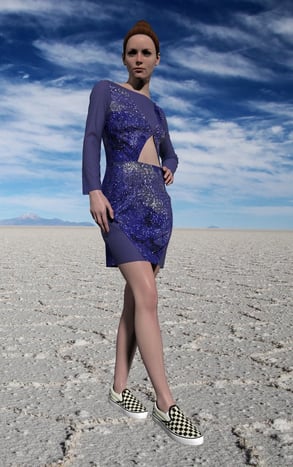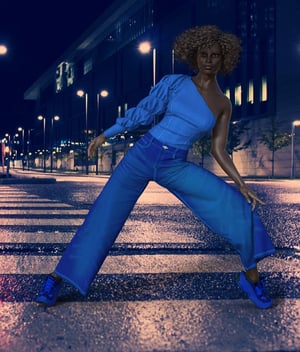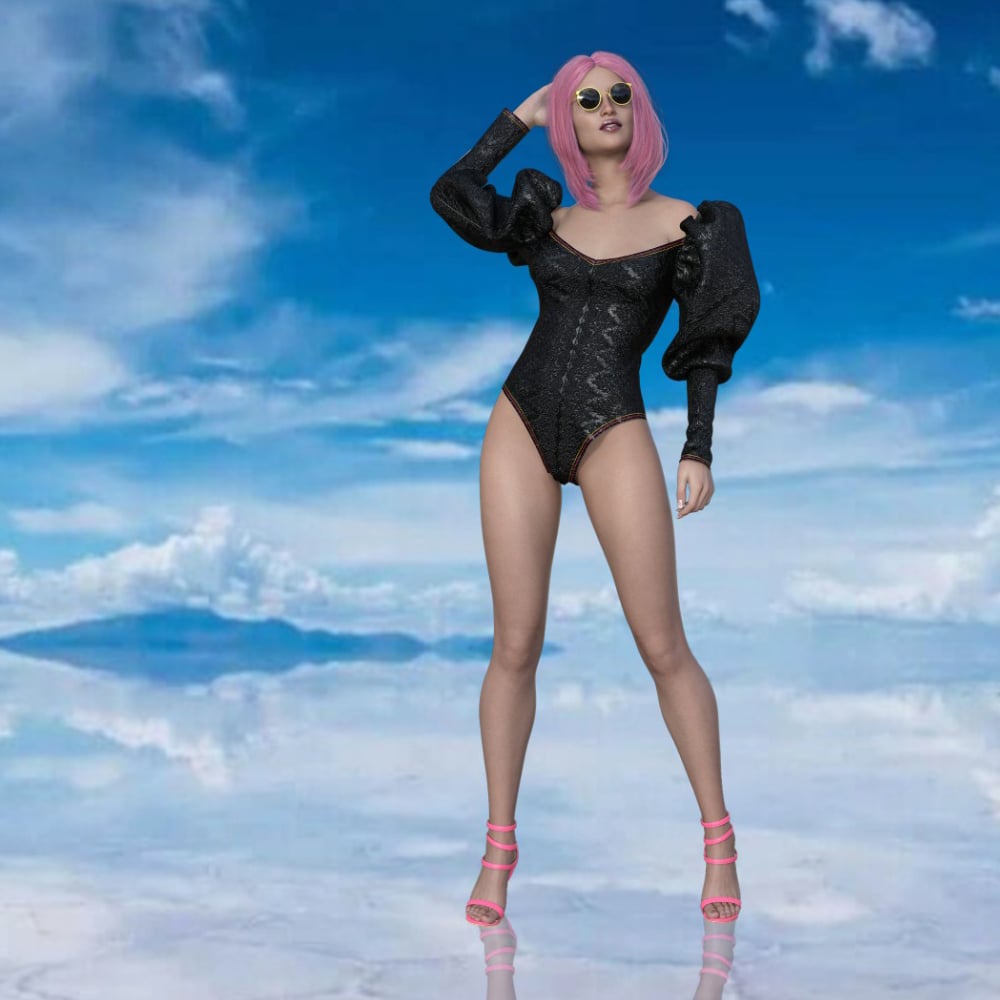Best PLM Software for Fashion in 2025: How to Choose and Implement
A fashion PLM integrates with 3D design software to help brands innovate, cut costs, and optimize design and production workflows.

We love seeing more and more talented designers from our Indie Program take the fashion industry by storm and use their newly acquired skills to bring about positive change and innovation. We recently caught up with Silvia Szymczyk to hear more about her unique journey with 3D and how leveraging digital tools enabled her to make her vision a reality and work towards creating a less wasteful industry.
 Unlike many traditional designers, Siliva comes from a background of science, studying biology throughout her education and working in biological research. After completing her studies, she took on a fashion retail role before embarking on her initial career path. However, after being exposed to the world of apparel, it was clear for Silvia that there was no turning back. To begin her new fashion journey, which had been a childhood dream of hers, Siliva set off to Italy to gain industry knowledge and first-hand experience in the field.
Unlike many traditional designers, Siliva comes from a background of science, studying biology throughout her education and working in biological research. After completing her studies, she took on a fashion retail role before embarking on her initial career path. However, after being exposed to the world of apparel, it was clear for Silvia that there was no turning back. To begin her new fashion journey, which had been a childhood dream of hers, Siliva set off to Italy to gain industry knowledge and first-hand experience in the field.
When Siliva arrived in Italy, she began working as a seamstress and pattern maker, quickly picking up all the skills and techniques needed to create intricately detailed garments for several Italian artisan fashion brands. As Silvia progressed on her journey, she started to look into ways that would allow her to work faster, more efficiently, and carry out less resource-intensive processes. After researching and experimenting with several 2D CAD software programs and digital design solutions, she was introduced to Browzwear through the Stitch Accelerator program in 2019. “The concept of 3D fashion design was a game-changer for me, and there was so much I wanted to discover. I already knew the ins and outs of garment construction and pattern making, but now it was time to leave the sewing machine behind and bring my designs to life on the computer screen,” says Silvia.
 Soon after, she joined the Browzwear Indie Program to advance her path in the digital apparel field and gain a deep understanding of Browzwear’s 3D design software, VStitcher. “The more familiar I became with the concept of 3D, the more I could see how much it had to offer. Working with digital garments goes far beyond the design side; it opens up a whole new world for garment showcasing,” says Silvia. “As I progressed on the Indie Program, I was able to take advantage of a complete, comprehensive solution and transform my patterns and designs into a production-ready tech pack.”
Soon after, she joined the Browzwear Indie Program to advance her path in the digital apparel field and gain a deep understanding of Browzwear’s 3D design software, VStitcher. “The more familiar I became with the concept of 3D, the more I could see how much it had to offer. Working with digital garments goes far beyond the design side; it opens up a whole new world for garment showcasing,” says Silvia. “As I progressed on the Indie Program, I was able to take advantage of a complete, comprehensive solution and transform my patterns and designs into a production-ready tech pack.”
 As Silvia became more proficient in digital design tools, she began freelancing for several well-known apparel brands as a 3D fashion developer. “During my time in the fashion design and retail industry, I would see so many garments go unsold each season. I wanted to be able to use my newly found skills to enable brands to sell garments digitally before they are produced, and as a result, cut back on their costs and fabric waste,” says Silvia. She soon realized that the industry was slowly but surely evolving, and it appeared to be unnecessary to create multiple physical samples for the same garment when the approval cycle could effectively be conducted digitally.
As Silvia became more proficient in digital design tools, she began freelancing for several well-known apparel brands as a 3D fashion developer. “During my time in the fashion design and retail industry, I would see so many garments go unsold each season. I wanted to be able to use my newly found skills to enable brands to sell garments digitally before they are produced, and as a result, cut back on their costs and fabric waste,” says Silvia. She soon realized that the industry was slowly but surely evolving, and it appeared to be unnecessary to create multiple physical samples for the same garment when the approval cycle could effectively be conducted digitally.
It wasn’t long before she built up a growing client-base, launching her own business, E-Thical Digital Fashion, in the second half of 2020, intending to drive digitization within small and upcoming apparel businesses. “Over the past year, I have been working hand in hand with a variety of clients, some who are already using 3D within their day-to-day, and some who didn’t even know that 3D fashion existed,” says Silvia. We start with the initial design idea, and then bring the garment to life in 3D, making any changes along the way, in just a few clicks until we achieve the result we want” .

As Silvia looks to the future, she hopes to raise even more awareness of the benefits that going digital brings to apparel brands, and of course its impact on the environment and the world around us. One of her main focuses for the coming year is transforming traditional, costly photoshoots into ultra-realistic 3D presentations without being restricted by time, location, or available resources. “If anything, the nature of the recent global pandemic has highlighted that digital is the way of the future for the fashion industry, leading fashion schools in Italy have started to educate their students in 3D design, and more and more brands have opened their doors to innovation.”
Silvia has some exciting projects lined up that we look forward to seeing, so be sure to keep up with her digital journey via her Linkedin , Instagram.
Browzwear’s Indie ProgramIf you are an independent designer looking to enter the world of 3D, apply for Browzwear’s Indie Program
A fashion PLM integrates with 3D design software to help brands innovate, cut costs, and optimize design and production workflows.
Discover how 3D rendering revolutionizes fashion design with realistic prototypes, reduced waste, and innovative tools like Browzwear's VStitcher.
Learn how to integrate fashion PLM with 3D design software to streamline workflows, boost collaboration, and speed up product development.